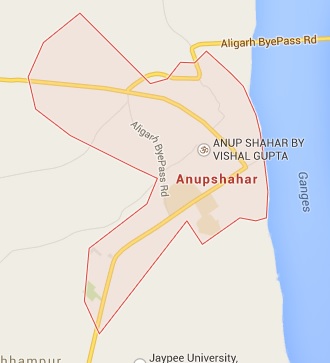Anupshahr History
History of Anupshahr – The Legacy of Chhoti Kashi
Parichay (Introduction)
Anupshahr, often referred to as Chhoti Kashi, is a historically rich town situated on the banks of the sacred River Ganges in Bulandshahr district of Uttar Pradesh. While it is now known for its peaceful ghats, religious importance, and sweet shops like Sardaar Sweets, the town has a deep-rooted history that spans over centuries. From royal acts of bravery to key moments during the Indian freedom struggle, Anupshahr’s past is woven into the larger fabric of Indian heritage.
Cultural Heritage and Spiritual Significance
Over the centuries, Anupshahr retained its spiritual character, earning it the nickname “Chhoti Kashi” due to the presence of multiple temples, ghats, and religious fairs. The Ganges flowing along the eastern border adds sacred charm to the town, making it a site for pilgrimage and spiritual healing.
Today, Anupshahr is not just a historical city but also a living museum of Indian culture, courage, and community values. It beautifully blends the past with the present, offering stories of bravery, trade, devotion, and independence.

The Founding of Anupshahr – The Legend of Raja Anup Rai
According to the Imperial Gazetteer of India, Anupshahr was founded during the early 17th century, between 1605 and 1628, by a courageous Bargujar Rajput ruler, Raja Anup Rai. His name would not only define the town but also become a symbol of loyalty and valor.
During a royal hunting expedition under Mughal Emperor Jahangir’s reign, Raja Anup Rai bravely saved the emperor from a lion attack. Deeply impressed and grateful for his bravery, Emperor Jahangir gifted the land of Anupshahr to Raja Anup Rai. The town was subsequently named after him as a token of honor and legacy.
In addition to founding the city, Raja Anup Rai is also credited with building a fort near Anupshahr, which stood as a symbol of strength and defense during that era.
Anupshahr in the Era of King Tarasingh – A Hub of Ayurvedic Trade
The city experienced significant economic and cultural growth during the reign of King Tarasingh, a successor in the royal lineage. Under his rule, Anupshahr became a flourishing center for Ayurvedic medicine. The knowledge of herbs and traditional treatments in the region not only attracted scholars and healers but also led to thriving Ayurvedic trade routes.
Boats laden with Ayurvedic products would set sail from Anupshahr, making their way across North India, contributing to both the city’s prosperity and its recognition in traditional medicine circles.
Rule of Nawab of Oudh – 18th Century Shift
In the 18th century, for a brief period, Anupshahr came under the rule of the Nawab of Oudh. Although short-lived, this period brought about some administrative changes in the region. However, the city’s unique identity and cultural foundation remained intact.
Following the Oudh rule, Anupshahr became a cantonment area, housing military activity and administration. This status significantly contributed to its infrastructure and connectivity.
Anupshahr During British India – A Stage for Freedom
As the British Empire expanded across India, Anupshahr too found itself in the pages of modern history. During India’s freedom struggle, the city witnessed several important events and revolts. It became a center for underground revolutionary activities, secret meetings, and nationalist movements.
One of the noteworthy moments was when Lord Canning, the first Viceroy of India, camped in Anupshahr during his visit to Delhi. His stay further established the city’s relevance in British India, both strategically and administratively.
Conclusion
From its foundation by Raja Anup Rai to its vital role in Ayurvedic trade and freedom movements, Anupshahr’s history is a tale of honor, resilience, and growth. Its ancient roots, religious devotion, and cultural contributions make it more than just a town — it is a testament to India’s glorious and layered past.
Whether you’re a history enthusiast, a spiritual seeker, or a traveler in search of authentic Indian towns, Anupshahr offers a unique journey into the past that still echoes in its present.

